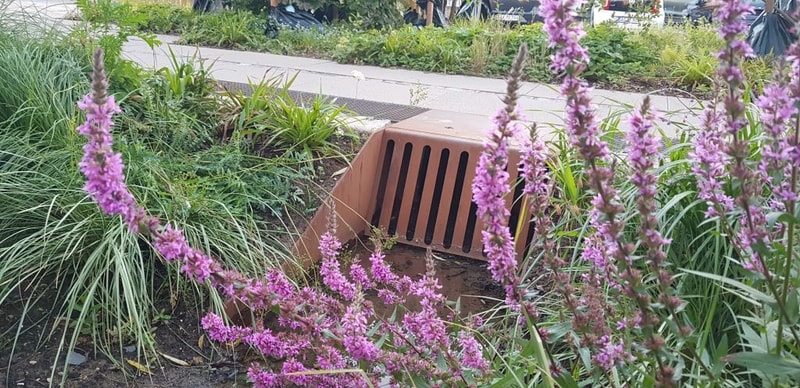The central theme for the reshaping of Sankt Kjelds Square was to create a high quality water sensitive urban space with lush natural elements. The square used to be a large roundabout with multiple lanes for traffic and parking. Due to little use, much of the formely sealed area became green space or was given to “soft” road users: pedestrians and cyclists.
Sankt Kjelds Square
Introduction

About the Project
Quick Facts

Choosing the right Greening
Water sensitive elements like trenches, rain gardens and green basins require carefully selected plants, which are (1) able to withstand changes in soil moisture and (2) ideally can remove pollutants from filter soil. A bottom layer of wildflowers and grasses provides an insect friendly habitat.

Cloudburst Protection
During a heavy cloudburst (10-year-event) the central and decentral solutions handle the first 40% of the stormwater. This is a crucial relief to the sewer system and effective flood prevention, as it greatly reduces the risk of a sewer overflow.

The Project's Impact
The first flush principle
The first liters of a cloudburst can carry a heavy loads of pollutants (e.g. rubber from tires, oil from cars), which are best kept away from plants, soil and the natural water cycle. The rainwater management elements on the square are therefore designed discharge the “first flush” into the sewer system.

The Project Partners
The project is one of the three partial projects forming ‘The Climate Neighborhood’. The Project was launched within the scope of a neighborhood renewal renprogram. Tåsinge plads is a shared project of the City of Copenhagen and HOFOR – Greater Copenhagen Utility. Further project partners were the neighborhod renewal office, which coordinated public involvement, the consultancies, viatrafik and ORBICON, as well as the architecture firm Third Nature.



